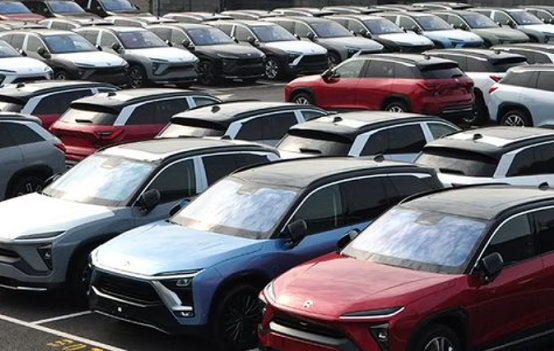The debate about new energy vehicles has never stopped. “Save fuel but not money?” “Leek harvester?” and other remarks are endless, but more and more car owners admit that “once you drive an electric car, you can’t go back.” Who is lying about the rumors about new energy vehicles? In this contest between new and old forces, new energy vehicles are quietly rewriting the market landscape with their three core advantages.
[Three revolutions that subvert cognition]
1. Dimensional strike of mechanical quality
When the motor replaces the internal combustion engine, the physical shackles of the traditional power system are completely broken. Whether it is the rapid response of zero-to-hundred acceleration or the leapfrog improvement of NVH quietness, the driving experience has undergone a qualitative change. A new energy car owner once compared it vividly: “It’s like switching from DVD to 4K Blu-ray, the silky feeling is addictive.”
2. Alternative algorithm for cost account book
Take mainstream B-class cars as an example, the comprehensive cost of fuel vehicles is about 0.8 yuan per kilometer, while the night charging cost of pure electric models can be as low as 0.1 yuan/kilometer. Calculated at an average of 20,000 kilometers per year, 80,000 yuan in fuel costs can be saved in 5 years. Although there is a problem of battery attenuation, the latest “long-life battery” released by CATL has achieved a capacity retention rate of ≥ 80% for 8 years and 300,000 kilometers.
3. The generational gap of the intelligent revolution Compared with models of the same price, the computing power of the smart cockpit chip of new energy vehicles is generally 5-8 times that of fuel vehicles. An engineer of a joint venture brand revealed: “The iteration cycle of traditional car-machine systems takes 18 months, while new forces can achieve weekly updates through OTA.” This generational gap is more obvious in the field of autonomous driving. The assisted driving system of the leading new forces has achieved 5% algorithm optimization every quarter.
[Car Buying Guide]
1. Technological Choices for Power Systems
Silicon carbide (SiC) electric drive systems are becoming a technological watershed. Compared with traditional IGBT modules, SiC devices can increase the efficiency of electric drive systems by 5%-8% and increase the range by about 7%. It is recommended to give priority to models using third-generation semiconductor technology. Such products can achieve a breakthrough of 400 kilometers of range after charging for 10 minutes under an 800V high-voltage architecture.
2. The life and death line of battery safety
Lithium manganese iron phosphate batteries have emerged as a new force. On the basis of maintaining the safety of lithium iron phosphate, the energy density has increased by 15%. When purchasing, you need to pay attention to the innovation of battery pack structure, such as the “cell inversion” design of CATL Kirin batteries, which can achieve directional pressure relief in the event of thermal runaway, giving passengers 30 minutes of golden escape time.
3. Distinguishing between the real and fake of intelligent driving systems
Beware of “futures marketing”. A truly mature urban NOA should have three hard indicators: support unprotected left turns at complex intersections, be able to cope with temporary diversions on construction sections, and be able to identify blurred markings in special weather conditions. At present, only a few leading companies have achieved these three capabilities. When purchasing, it is recommended to experience the system performance in the night rainstorm scene.
4. The secret battlefield of body safety
In addition to the collision test results, we should pay more attention to “hot-formed steel coverage” and “integrated die-casting technology”. A new power model uses 81% of high-strength steel above 720MPa, and with the world’s first 20,000-ton die-casting machine, the body torsional stiffness reaches 41,600N·m/deg, far exceeding the luxury brand standard.
5. The life cycle of corporate survival
The elimination of new forces is accelerating, and it is recommended to focus on the proportion of corporate R&D investment and cash reserves. Industry analysts pointed out: “Companies with annual R&D investment of less than 4 billion will gradually fall behind.” Choosing a brand with full-stack self-development capabilities and cash reserves of more than 50 billion can effectively avoid the risk of “Weimar-style” thunder.
Who is lying about the rumors about new energy vehicles?At the crossroads of industrial transformation, new energy vehicles are reshaping the value chain of the automotive industry. When traditional car companies start paying patent fees for the three-electric system and when the density of charging networks exceeds that of gas stations, this travel revolution is no longer a simple technology replacement, but a dimensional competition of the entire ecosystem. What consumers need to do is not only to choose a car, but also to choose a ticket to the future.
















Leave a Reply